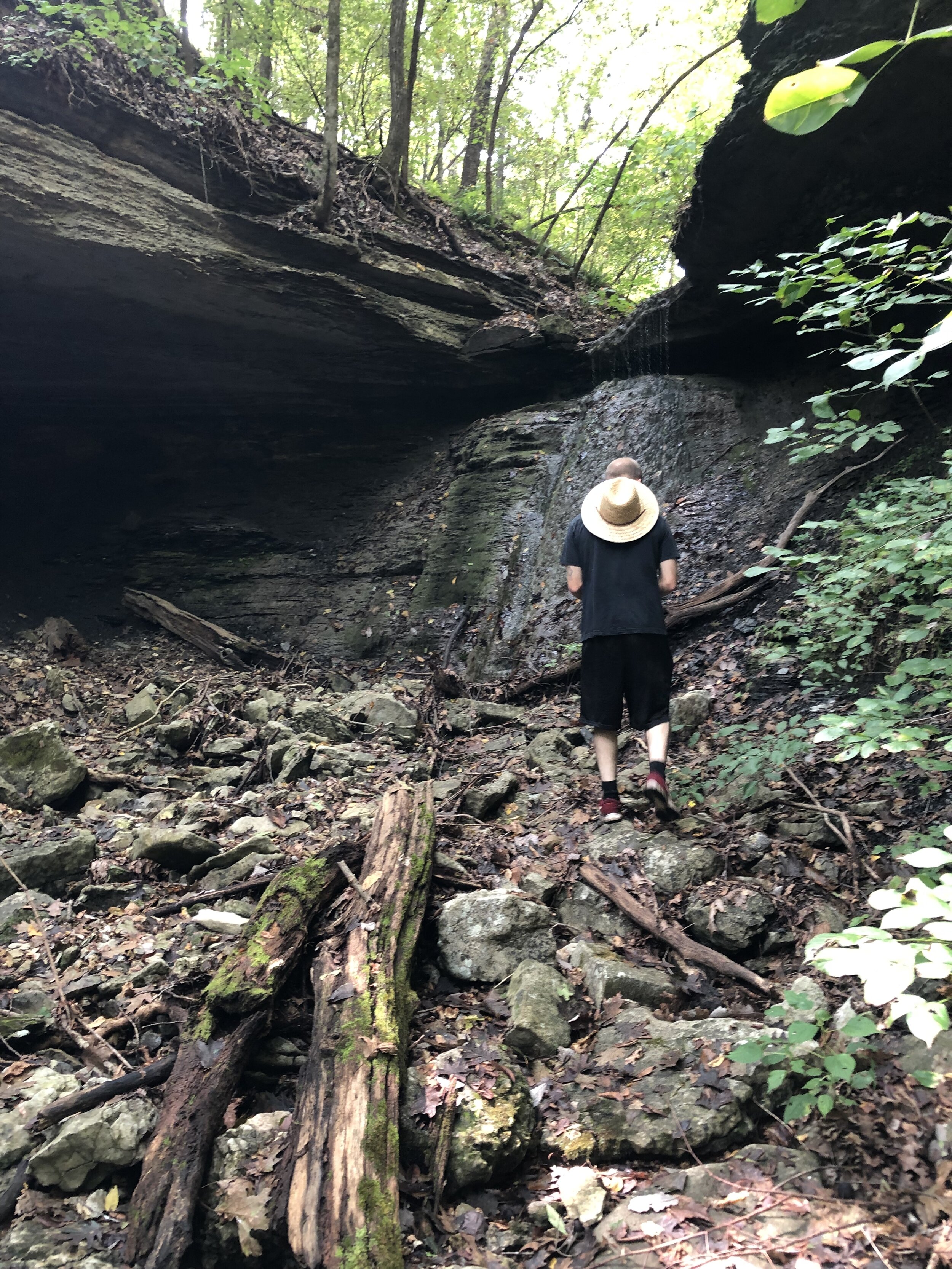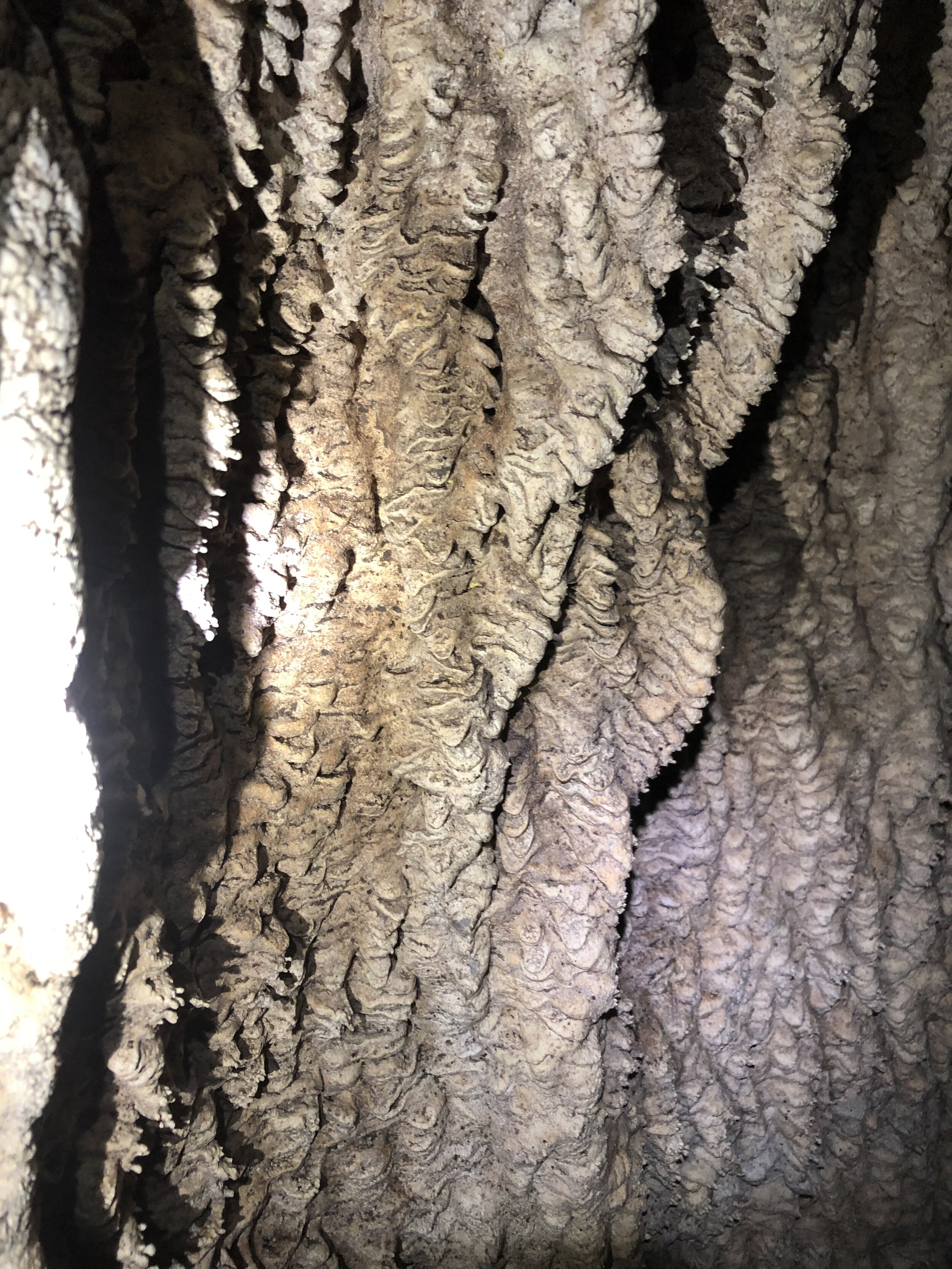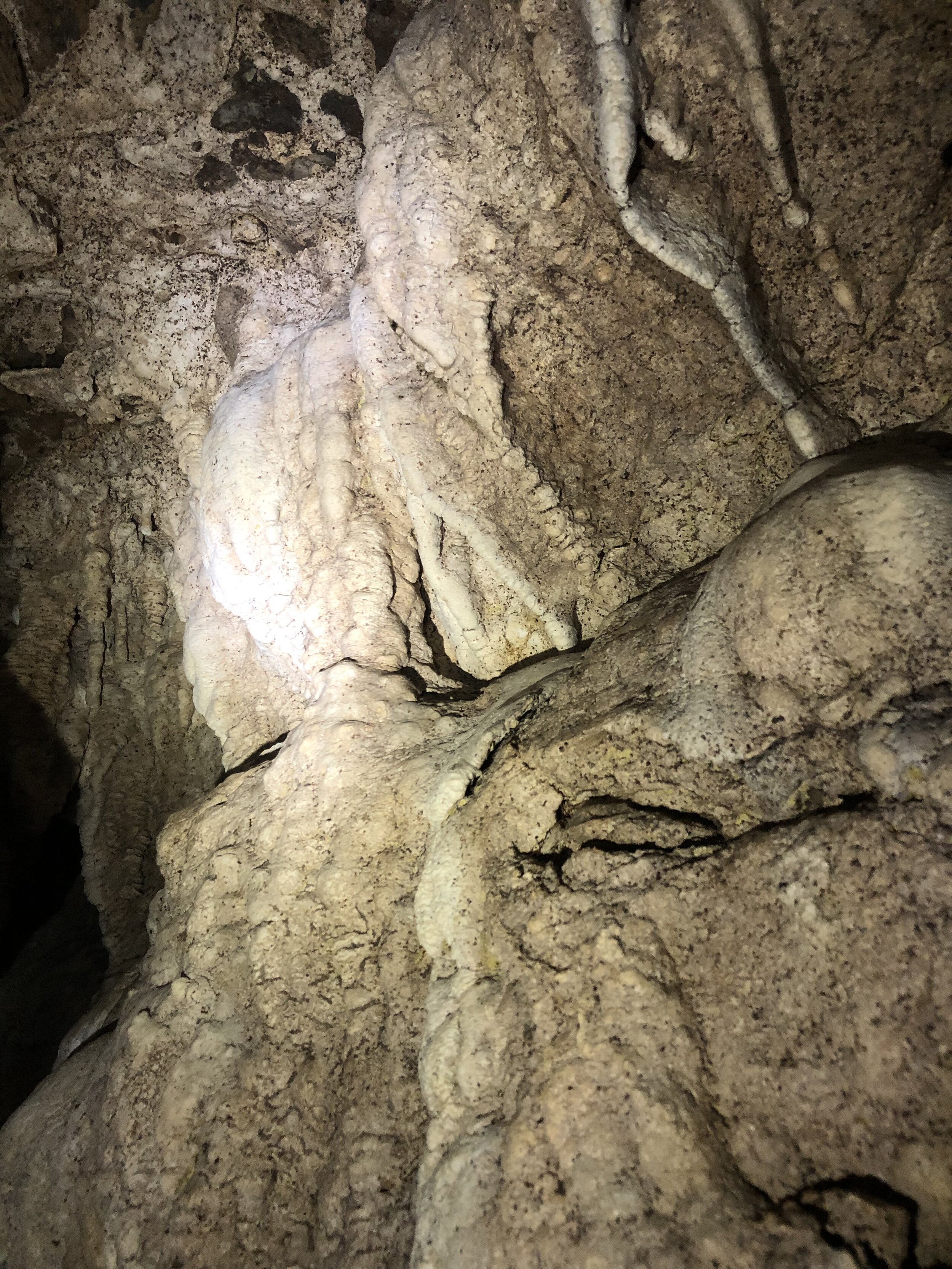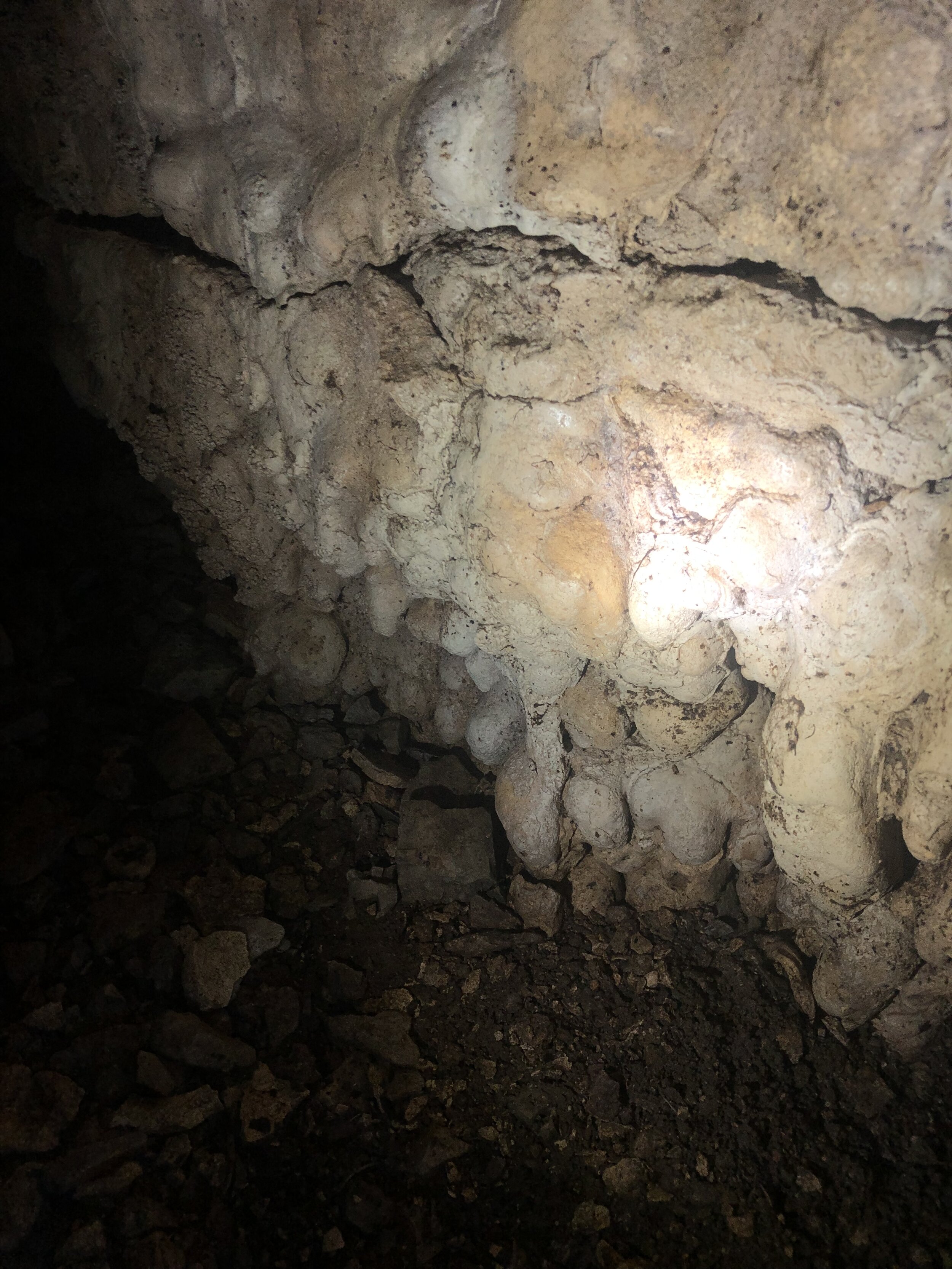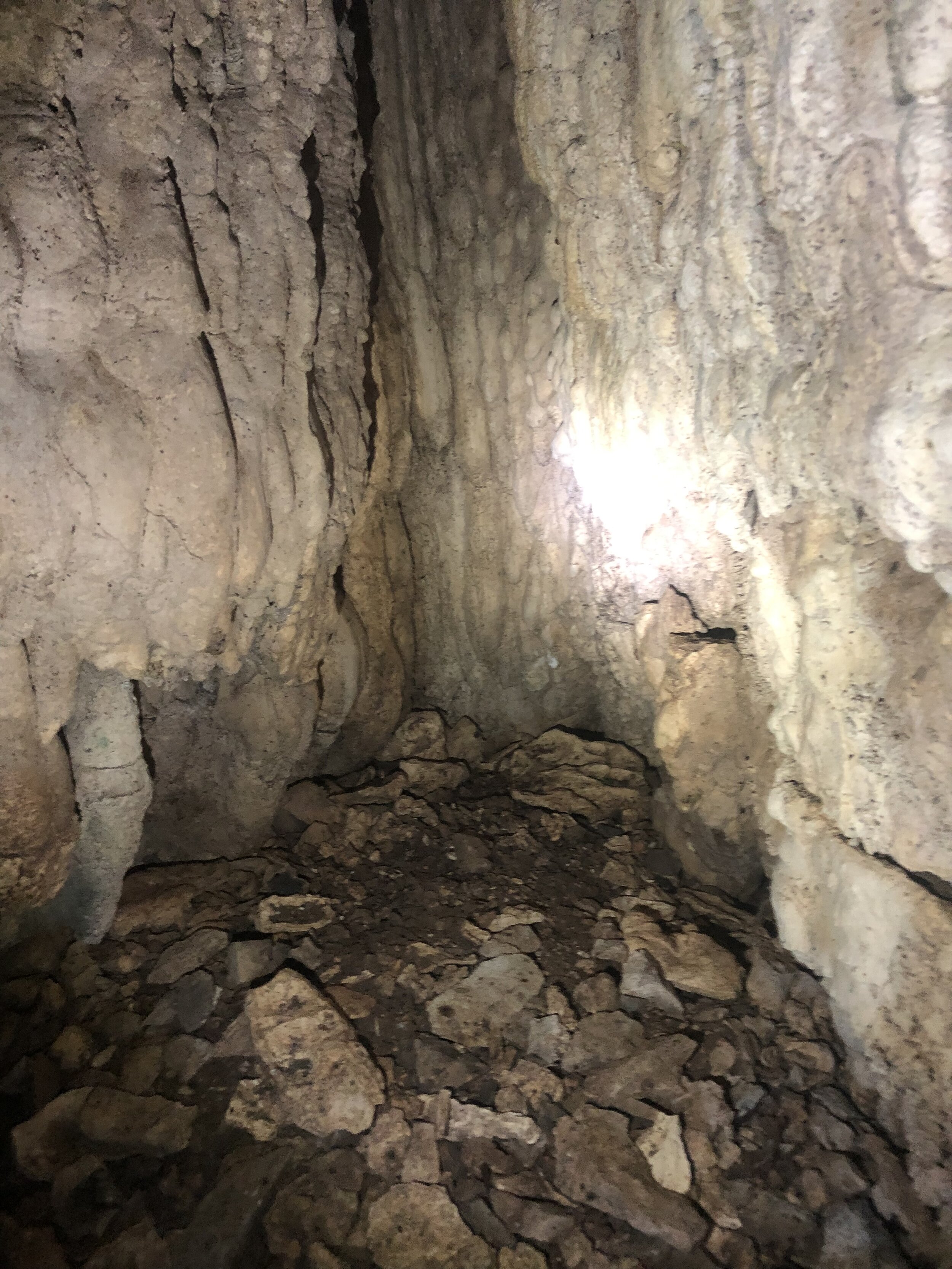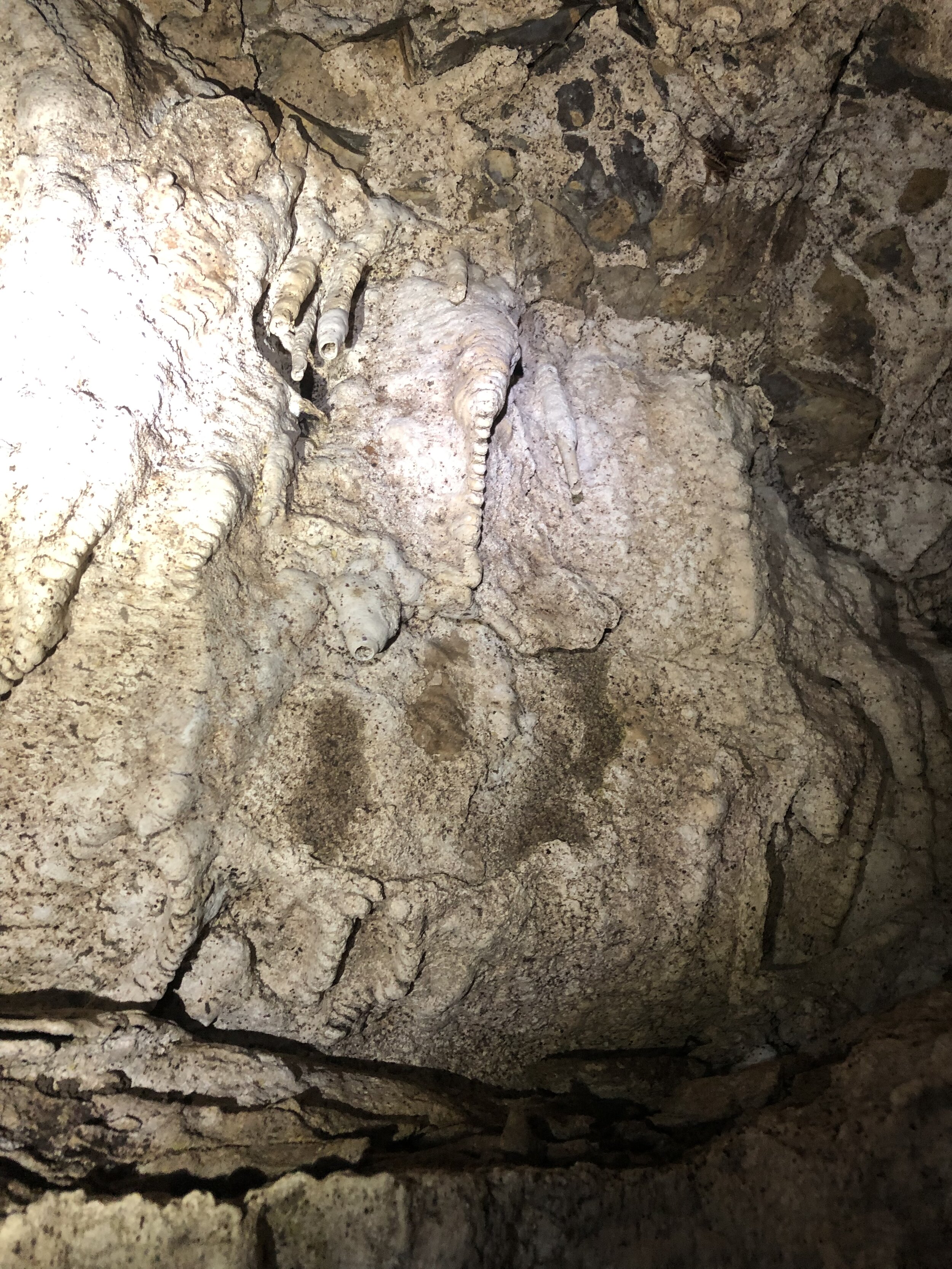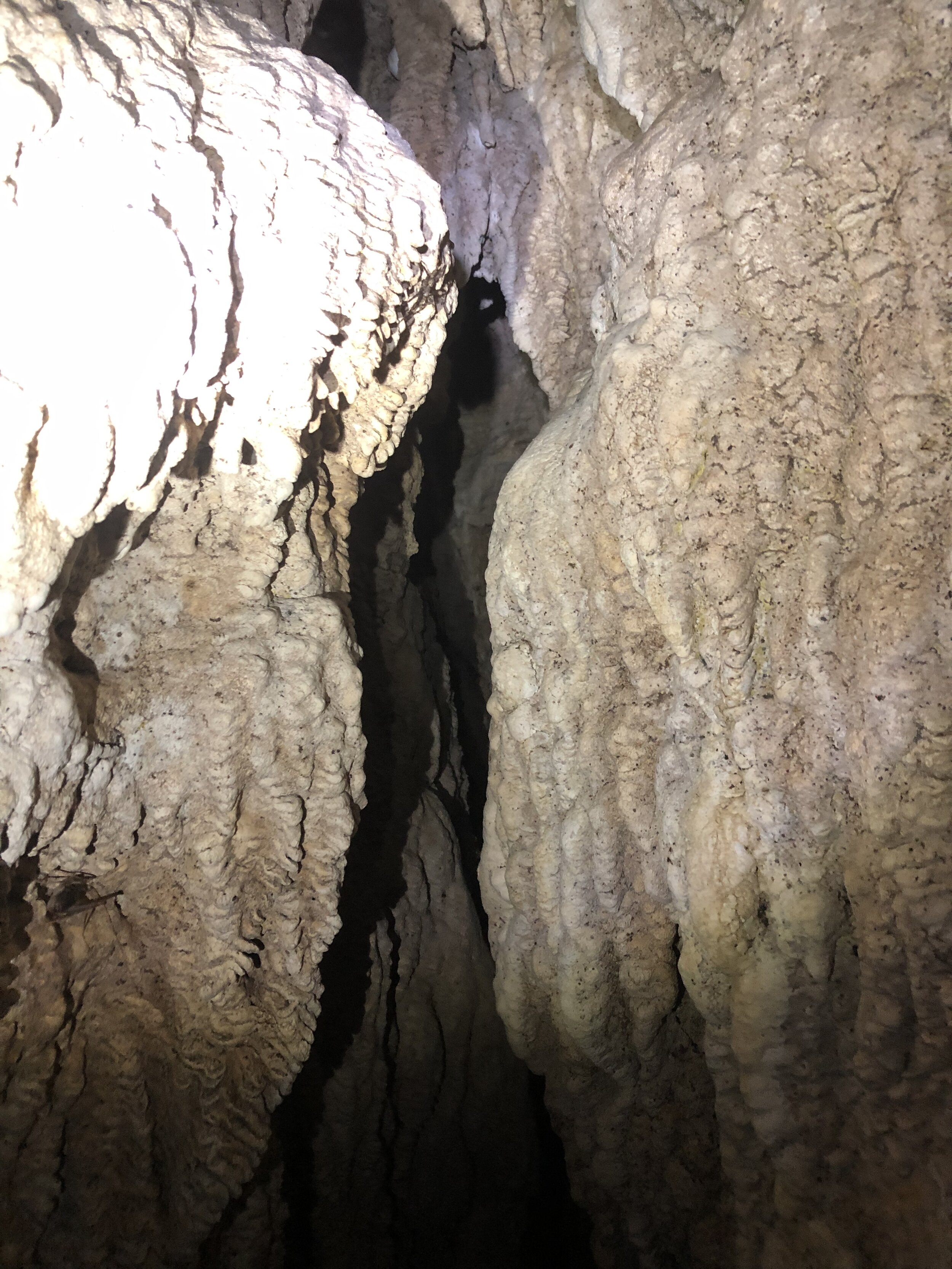Cave Hunting Chapter 1
The world is full of beautiful wonders of course.
Some of those wonders are hidden underneath layers of mud, rock, and poison ivy and require an immense lack of claustrophobia to find however.
During my free time, as the weather cools and the underbrush dies back- I begin my ridgewalking season.
Ridgewalking is the act of literally walking along ridge lines and following geological markers in search of karstopography and caves!!!
A waterfall we found while ridgewalking today!
While ridgewalking last year, Joe (from the podcast intro) and I were exploring the ozarks in search of caves or any interesting land features. I always begin by pulling up google maps or a topographic map and search for areas of stark elevation changes. These changes indicate some form of geological activity and depending on the actual geology of the area could indicate the presence of caves or karst (landscapes formed by limestone.) Here in eastern Oklahoma/ Arkansas karst landscapes are abundant and are often spotted right off of the highway. If I have a general idea of an area I think has potential, I’ll begin looking at mining maps or topographical maps to note any indication of quarries, mines, or already discovered caves to help narrow down the acreage.
Often times, I’m not looking for already discovered caves, but ones that remain hidden. These can present themselves as tiny holes in the rock or can sometimes be completely buried underneath centuries of mud and erosion with the only indication being small sink holes above the surface.
Some of the world’s most decorated and luxurious caves began as a tiny one room hole in the ground that would later open up into a labyrinth of ancient history and geological jewels that decorate the walls for miles. We simply have no idea what lies beneath our feet, and that is what drives me to search and dig.
After following a drastic ridge/ bluff near eastern Oklahoma for hours, we began to see more water activity and signs of erosion as creeks would swell up and dry waterfalls flanked the valley. We would eventually come to a 60 foot cliff with a base of small gravel and eroded limestone. Water was running down carpets of moss and lichen and the very top fo the cliff lied a very small hole. We spotted the hole on the other side of the ridge which prompted us to make the trek down and through the forest in the first place. Often times you will find dark spots and holes along the cliff that usually result in nothing more than an over hang but this one was different.
The limestone flowed around the cliff and almost directed us toward this small hole, indicating eons of erosion and actual water flow.
The hole itself was no larger than a foot and was filled with loose dirt and leaf litter. After a few minutes of digging, we were able to open the hole just enough to squeeze in and OH MY LORD.
A very very tight squeeze
From the outside, nothing would indicate or suggest what lied behind those stone walls. The lack of human activity, bullet holes, and natty light cans was a good sign as well.
After clearing a tight squeeze, the hole opened up into a 10-12foot chamber COVERED in formations and ancient sculpture. There were old stalactites that had chipped away, bubbling formations dripping down the walls and stacks of mineral deposits that resembled stone fungi. The floor of the cave was comprised of loose dirt that covered a majority of the formations (which is a great sign!) Out of all of the holes I’ve stuck my head in, none were as remarkable as this. The initial room was about 15 feet deep and had plenty of room to stand and walk around in.
There were signs of fossil and marine life in this cave after we opened it up a bit!
Cave life was plentiful as well, such as crickets, spiders, slugs and even orange and black salamanders!
The loose dirt floor was easy to move and shift around which leads me to believe that most of the cave is buried with the potential to unearth new chambers and rooms never seen by human eyes. This is of course every caver’s dream, but the abundant formations, signs of old water activity and solid walls buried beneath fresh dirt and erosion are all very good signs. Also the fact that this entrance exists at the front face of a large and vast limestone cliff. There's a good chance this cave does continue in some odd direction and will require a little bit of dirt shuffling to reveal what could be buried geological treasure (THAT MUST BE EXPLORED AND PRESERVED!!!)
This is the beginning of a potential real ass adventure and I’m so thrilled to share future chapters. The local grotto (caving group) and I will be attempting a basic cave dig September 26th to determine from surface observation if the cave has any potential!

